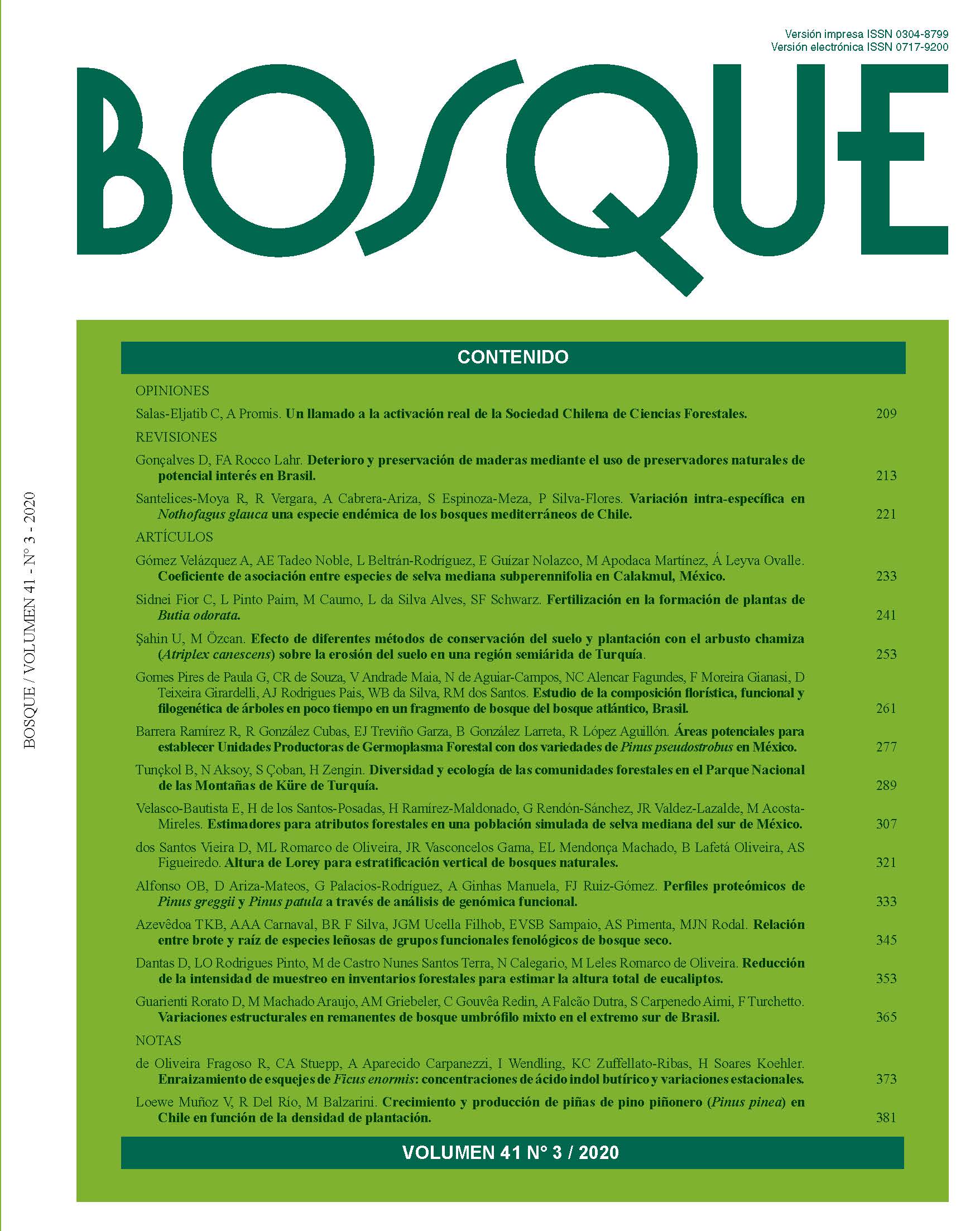Effect of different soil conservation methods and planting with four-wing salt bush (Atriplex canescens) on soil erosion in a semi-arid region of Turkey
Conteúdo do artigo principal
Resumo
This study was conducted to evaluate whether the four-wing salt bush plant (Atriplex canescens) can be used to prevent erosion on the areas with steep slopes with semi-arid conditions by applying different soil conservation methods and planting spaces in a semi-arid region of Turkey. For this purpose, eight treatments with three replications (20 m2 plots) were established in the study site to measure amount of runoff and soil loss after precipitation events in 2015 and 2016, where vegetation cover was completely removed by spraying herbicide. Planting holes and terraces were established and half of them were planted with saplings of Atriplex canescens with different planting spaces (3 m interval, 0.5 and 1 m distances) to determine if different soil conservation types or combination of them with planting have any impact on soil loss and surface runoff. The results suggested that soil loss and surface runoff in eight treatment plots were higher in 2015 compared to 2016. The highest soil loss was 0.42 Mg ha-1 in the control treatment, while the lowest was 0.11 Mg ha-1 with cultivation with terrace + 50 cm of A. canescens in 2015. The total surface runoff was 4.66 mm in the control in 2015 whereas it was 2.33 mm in terracing + planting of A. canescens at 50 cm spacing. The combined treatment (terrace with planting of A. canescens at 50 cm distance) seems to be the best method to decrease surface runoff and erosion compared to the other treatments employed on the slopes (43 %) in Eskisehir.

